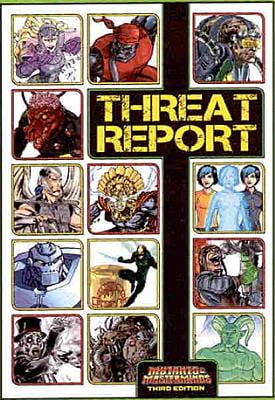

Phenomena: Colors, Dimensions, Dreams, Entropy, Ideas, Luck, Madness, Memes, Mind, Quantum Forces, Space, Thought, Time DESCRIPTORS Sample DescriptorsĪllegiances: Anarchy, Balance, Chaos, Evil, Good, Justice, Law, Liberty, TyrannyĮlements: Air, Earth, Fire, Plant, Water, WeatherĮnergy: Acid, Chemical, Cold, Cosmic, Darkness, Electricity, Gravity, Heat, Kinetic, Light, Magnetic, Radiation, Sonic, Vibration Conversely, the Noticeable modifier makes a normally subtle effect noticeable. The Subtle modifier can make noticeable powers difficult or impossible to detect. A continuous or permanent effect made instant, concentration, or sustained also becomes noticeable. If an instant, concentration, or sustained effect’s base duration is changed using modifiers, the effect remains noticeable. Effects with a continuous or permanent duration are not noticeable by default. Some effects are quite obvious, such as Flight, Insubstantiality, Growth, or Shrinking. For example, a Blast effect might have a visible beam or make a loud noise (ZAP!) or both. Another way to think of it is that this book is filled with effects, but your character sheet is filled with powers.Įffects with a duration of instant, concentration, or sustained must be noticeable in some way. It’s all a matter of how powerful the effect is and what modifiers have been placed on it to increase or decrease its performance. A hero with the Concealment effect could use it to create a power called Blending, Blur, Cloak, Invisibility, Shadowmeld, or anything else appropriate to the character you wish to play. A power is made up of one or more effects, possibly with different modifiers, which increase or decrease the cost of the effects.Įffects can be used to create any number of different powers. Players spend character points on various powers for their heroes, like acquiring skills or other traits. Ultimately it’s up to the GM to decide if having certain effects makes a character something “other than human,” (and what, if anything, that means) depending on the nature of powers in the setting. They’re still “powers” in game terms, but they don’t necessarily mean the character is something other than human.

Their amazing effects come from talent, training, luck, self-discipline, devices, or some similar source, with appropriate descriptors. For example, there are lots of comic book characters with superhuman traits still considered “normal” humans. Whether a character with powers is “superhuman” or not is largely a matter of opinion and the descriptors used. “Powers” refer to all extraordinary traits other than abilities, skills, and advantages. You can either start with those or build your own powers using effects, descriptors, and modifiers. To the right is a short list of sample, pre-made powers. This page describes these and many other powers and how you can create your own. Characters can lift tanks, fly through the air, throw lightning from their hands, shoot lasers from their eyes, or any number of other amazing things.

We have a Wiki page that includes links for various useful tools and resources, most of which have been provided by the members of this community.Although some heroes and villains rely solely on their skills and advantages, most are set apart by their superhuman powers. Archives of Nethys - Official PF Resource.Official Paizo AMAs on /r/Pathfinder_RPG.Here's what the flairs mean.įor Spoilers: >!This is a spoiler. Please click the rules header above to read a more comprehensive breakdown of our subreddit's rules. Rule 1b: Be reasonable with your language Posts not related to Pathfinder are subject to removal at the mods' discretion. For everything about the Pathfinder Tabletop RPG! (Not administered by or affiliated with Paizo Publishing® in any way).


 0 kommentar(er)
0 kommentar(er)
